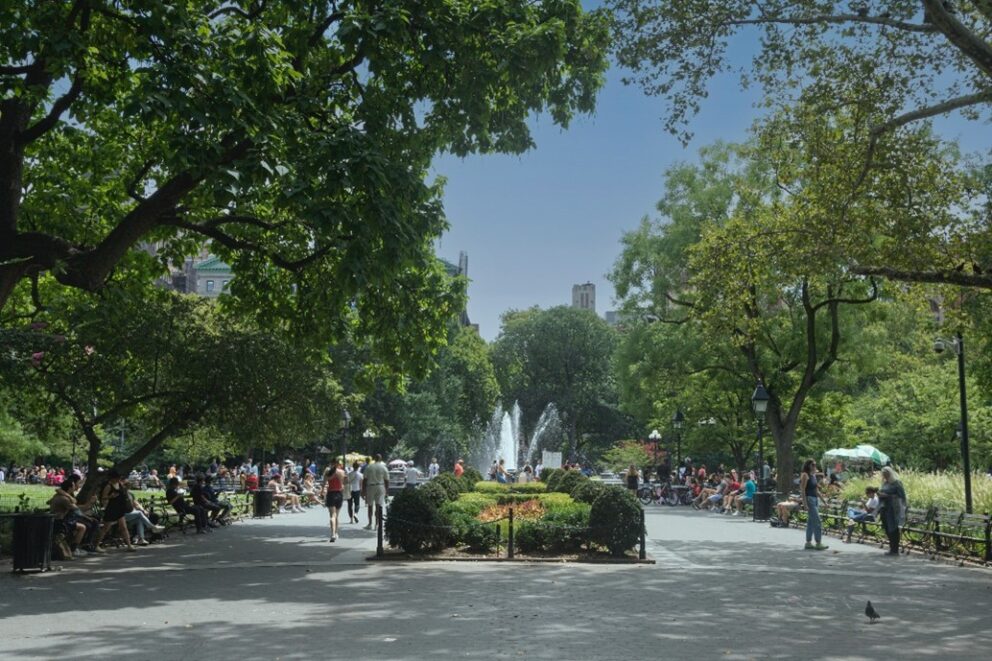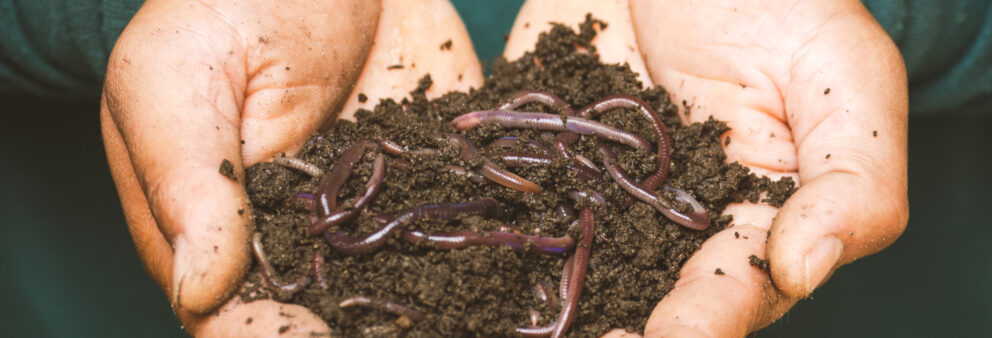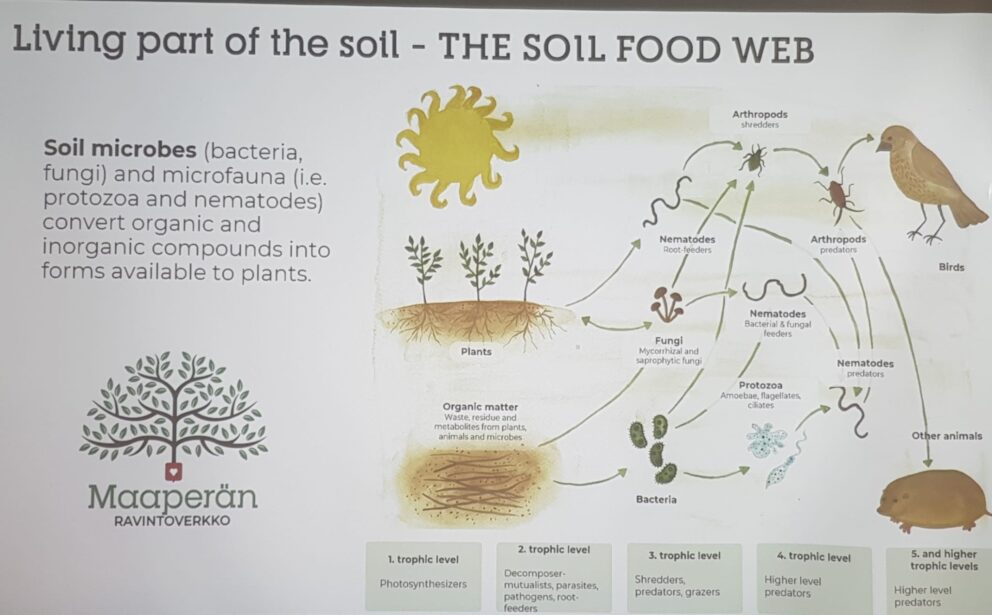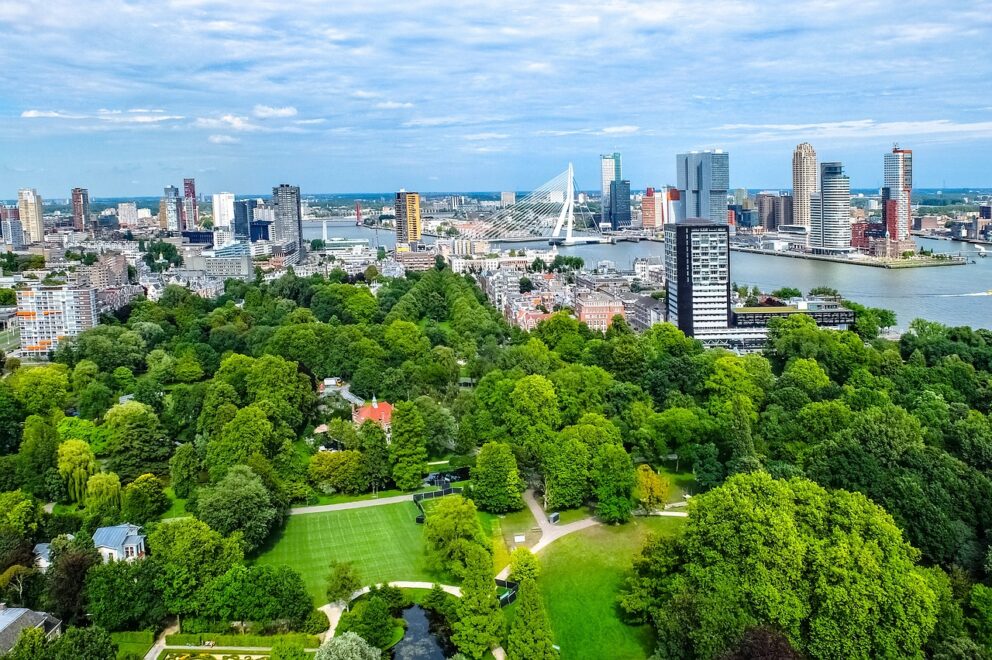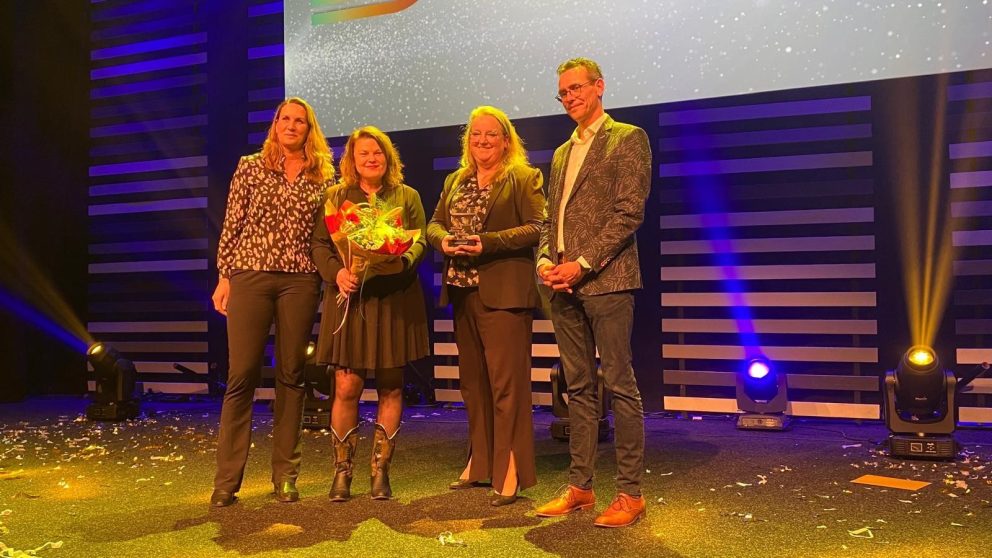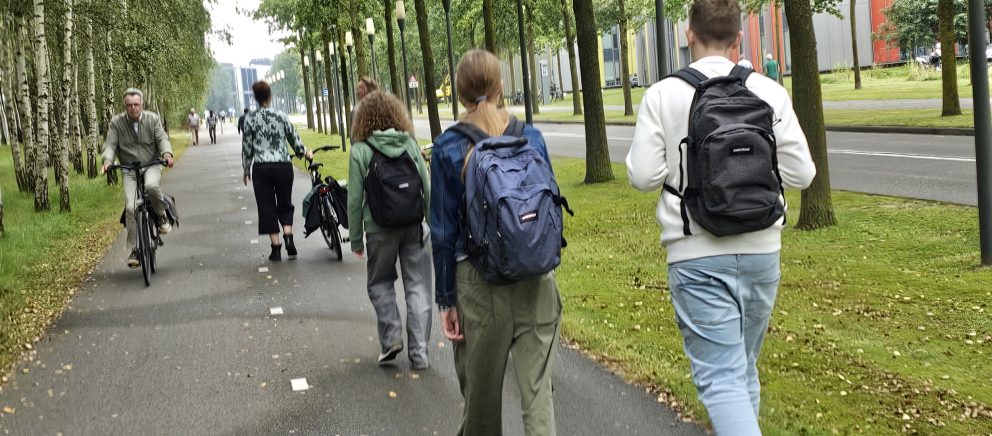The Green Liveable City Practorate was launched in May 2021, and is led by Heidi Kamerling. The practorate is part of Yuverta and connected to the Dutch Centre of Vocational Excellence (CoVE) on Urban Greening. In her articles Heidi Kamerling links scientific research to current topics from the green sector.
The ideal green city
It is May, the end of spring, and nature has come to life again. This is my favorite time of the year. The sun is increasing in strength and everything seems to be buzzing. From that perspective, it’s easy to see the green revolution that is going on in many cities as too rose-coloured. Unfortunately, in practice we still see a lot of gray areas without trees or plants in the vicinity. This is often a matter of prioritization and sometimes incomprehensible choices that were made in the past. We know that green cities are important because of climate adaptation, biodiversity restoration and the wellbeing aspect for people living in the city. In short, the wide variety of ecosystem services. Many scientists agree with me.
This is evident from the recently published book by Breuste (2023). It argues that the ideal green city is in balance with nature, where all forms of nature – from living organisms to their habitat – are very important components of the urban environment and part of a green infrastructure. Urban nature is seen as an ideal service provider and a key concept for urban development. According to Breuste, almost all types of urban spaces are suitable for urban nature. These forms of urban nature are distinguished in the book:
- Random green (“wild green”) or green that is introduced through human decisions in the past. Examples include trees, verges, banks, residual greenery, public gardens, gardens, roof and facade greenery, parks or city forests. Together, these form the green basis in a city, but they are not necessarily connected to each other and the environment everywhere.
- Green urban infrastructure. These are specifically designed green spaces as part of a green infrastructure in the city. This results from an integrated inventory and design of a green corridor in the city. The concept of an urban green infrastructure is thus exemplary for strategic and integrated planning, protection, development and management of urban nature. This requires city-wide, district-oriented and project-based spatial concepts. This infrastructure offers great opportunities for all forms of living nature, including humans, in the city. Unfortunately, this is only the case in a few cities worldwide.
Green urban infrastructure
It is a fact that few European cities, but certainly very few Dutch cities and villages have a good green urban infrastructure. That has many causes. One cause are the conflicting interests that play a role in a city. A housing shortage and scarcity of space is an example of this. A recent study in Bucharest (Onose et all, 2023) shows which conflicts can arise in relation to the greening of the city. This study looked at all conflicts related to the 25 largest parks in Bucharest. It is striking that large areas of urban parks have disappeared in the last 20 years due to conversion into residential areas with private gardens or companies with communal (non-public) gardens. In the whole of Bucharest that is a loss of 60ha of parks! According to this study, this loss is caused by a weak legislative framework in connection with the desire for residential and commercial properties. In short: the wish of the individual versus the collective. At the moment, choices are being made in all European cities regarding the greening of the city. The need for this is being recognized. But it’s important that, in addition to applying greenery in, on and near buildings (which are often private), investments must also be made in the green lungs of a city, such as a city park.
But corridors are also needed to connect those city parks and gardens. If one green area replaces the other, ecosystem services cannot work optimally. Legislation and the right choices by policymakers are necessary for this is one of the most important conclusions of the study.
Ecosystem services in the soil
When it comes to ecosystem services in the city, we often think of what happens above ground. But ecosystem services in the soil are at least as important. That is another conflict, that what is happening above ground and below ground are not in agreement with each other. And that while the use of the soil as a vegetable garden, city park or green area is becoming increasingly intensive. According to Joop Spijker (2022), this requires specific knowledge of the desired properties of the soil that goes further than the knowledge and data that is now often available in soil quality maps. In the future, an increasingly important role will be played by the soil in interaction with greenery when it comes to climate control, water storage and urban biodiversity.
The research involved experimenting with the recycling of green residual flows in the urban garden Urbaniahoeve in Amsterdam. Wood chips and leaf waste from urban green management and GFT compost made from household waste have been applied as a mulch layer on a poor sandy soil under the former parking lot. Within four years, a clear, measurable improvement in soil quality in a chemical, physical and biological sense had been achieved.
Soil food web
Dr. Elaine Inham has been researching soil ecosystem services for years, or as she calls it the ‘soil food web’. She has started a (partly digital) institute with many specialists all over the world who are mainly concerned with the soil food web in relation to food cultivation. But knowledge about soil biodiversity is not new. The Scottish biologist M.B. Usher already described this 40 years ago: “You don’t have to travel far to discover a wide variety of living organisms in a small area. Just taking a look under your feet can exceed your wildest expectations. The ground is teeming with life. Except for the occasional earthworm or isopod, you normally don’t see much of that, since many benthic animals are only a few millimeters in size and the majority much smaller. To view microorganisms, you need a microscope. However, a handful of fertile soil contains thousands of species, billions of bacteria and meters of hyphae.”
In his 2018 blog, Jack Faber (WUR) already talks about ecosystem services to which soil organisms contribute. Here’s a summary:
- Natural soil fertility: less fossil energy, chemicals and fertilizers needed, closing of nutrient cycles
- Water infiltration (increasingly important in view of climate change), reduced costs (weather insurance, flooding, land accessibility, reduced crop losses)
- Natural pollination: many pollinators have a soil-bound life stage
- Biological pest control in crops – less chemical crop protection products needed
- Natural degradation, e.g. of plant protection products (clean water)
- Food and fibers from the soil itself (mushrooms, snails, etc.)
- Less known: the taste of produced food
- Resource for medicines
The theory of the soil food web is now being used much more widely, including for green in the city. The importance of soil life is evident from the popularity of worm hotels. You see them more and more often in neighborhoods, at companies but also at private homes. There is also one at my house and at our Yuverta Park. You can make optimal use of valuable nutrients such as coffee grounds and organic waste by means of a worm hotel for a healthy soil. Super composters are worms, you see results really fast.
Restoration of soil life
The popularity of the soil is also evident from the film ‘Onder het Maaiveld’ (below ground level), which can now be seen in cinemas across The Netherlands. Onder het Maaiveld is a three-year program of IUCN NL, De Vlinderstichting, NIOO-KNAW, WUR and the Center for Soil Ecology that ran from April 2020 to April 2023. Together with other organizations, they worked on a structural change in how we deal with our valuable soil. The target? Restoration of soil life in the Netherlands, as the basis for healthy nature and a healthy society. A guide to healthy soil has been drawn up from this body. The manual provides practical tips for municipalities and green managers regarding a healthy soil policy. But the manual can also be used by gardeners and private garden owners. The manual contains many practical tools and can be downloaded free of charge as a PDF via: https://www.iucn.nl/app/uploads/2022/10/Handreiking-Gezonde-Bodem.pdf.
The manual also refers to the earthworm map of the Netherlands. Earthworms of the Netherlands mapped | Atlas Natural Capital. The new maps in the Natural Capital Atlas show the density and diversity of earthworm communities. Without earthworms, life on Earth would look very different. Man would not exist in the guise known to us. Earthworms are essential for developing fertile soils. The structure, the organic matter, the air and moisture-regulating capacity and the dust cycles are influenced by the long-term presence of earthworms. Many (meadow) birds forage on earthworms. Earthworms belong to the giants of soil life, the so-called macrofauna. Most soil life cannot be seen with the naked eye. About 25 earthworm species are known in the Netherlands. There are an average of 206 earthworms per m2 of soil surface in the Netherlands. There are so many that together they convert an enormous amount of soil, the natural plowing capacity. Some species are very common. They are classified into three groups, based on their choice of food, behavior and appearance: commuters, bottom dwellers and surface grazers. There are 2 types of maps in this Atlas: the estimated earthworm density per square meter in the Dutch soil and the number of earthworm species per 100 individuals. Good to use for a soil inventory.
Heidi Kamerling, practor green livable cities, Houten, May 2023
Literature list:
Breuste, J. (2023). The green city: general concept. In Making Green Cities: concepts, challenges and practice (pp. 3-18). Cham: Springer International Publishing.
Ingham, E.R. and M.D. Slaughter. (2005). “The Soil Foodweb–Soil and Composts As Living Ecosystems”. International SoilACE Conference in Soil and Compost Eco-Biology. Leon, Spain. 1:127-139. Microsoft Word – 2. Contenido.doc (psu.edu)
Faber, J. (2018). Living soil: the basis for our lives (wur.nl)
